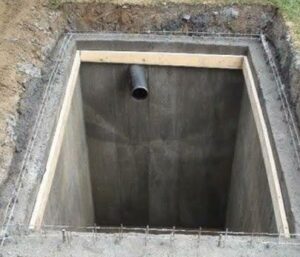Septic System Care 101: Maintenance Tips for a Healthy Home
A septic system is an unsung hero—quietly treating every drop of wastewater that leaves your sinks, showers, and toilets. When it’s looked after, a residential tank can serve you reliably for 25–30 years; when it’s neglected, repairs or full replacement can cost ten times more than routine upkeep. Below is a clear-cut guide to understanding how your septic system works and the steps you can take to protect it.

Why Regular Septic Maintenance Matters
Neglecting a septic tank can lead to health hazards, groundwater contamination, foul odours, plumbing backups, and expensive emergency call-outs. Scheduled inspections and pumping keep solids from clogging pipes, safeguard the leach field, and extend the system’s service life.
How a Septic Tank Works — The Basics
- Collection: All household wastewater flows into a watertight underground tank made of concrete, plastic, or fiberglass (typically 1,000–1,500 L in capacity).
- Separation: Inside, solids sink to form sludge, oils rise to form scum, and relatively clear liquid (effluent) sits in between.
- Breakdown: Naturally occurring bacteria slowly digest a portion of the solids.
- Dispersal: Effluent exits via perforated pipes into the drain field, where soil finishes the treatment before the water re-enters the groundwater system.

Seven Proven Ways to Keep Your Septic System Healthy
1. Schedule Professional Inspections
Have a licensed technician check the tank at least every three years (annually if you own a large property or run a business on site). Early detection of cracks, leaks, or rising sludge levels prevents nasty surprises.
2. Pump on a Predictable Calendar
Even with healthy bacteria, solids accumulate. Most households need pumping every three to five years. The exact interval depends on tank size, household size, and water usage—your inspector can recommend a timetable.
3. Flush and Drain Wisely
Only human waste and septic-safe toilet paper should go down the toilet. Keep out grease, oils, paints, solvents, antibacterial cleaners, “flushable” wipes, sanitary products, and coffee grounds. These items either overwhelm bacteria or block pipes.

4. Keep Detailed Service Records
Log each inspection, pump-out, filter cleaning, and repair. A maintenance folder helps new technicians diagnose issues quickly and can boost property value when you sell.
5. Rethink Food Waste Disposal
Garbage disposals grind food scraps into the tank, adding solids and shortening the pumping interval. Compost vegetable peels and leftovers instead of sending them down the drain.
6. Protect the Drain Field
Know its exact location and keep it clear. Never park cars, build patios, or plant deep-rooted trees there; excess weight or roots can crush or clog pipes. Redirect gutters and sump-pump discharge away to avoid oversaturation.
7. Watch Your Landscape
Greener-than-usual grass or soggy soil above the tank or drain field often signals a leak. Act quickly if you notice these spots or detect sewage odours.

The Benefits of Consistent Septic Care
- Environmental Protection: Proper treatment keeps bacteria, viruses, and chemicals out of groundwater and local waterways.
- Failure Prevention: Regular inspection and pumping reduce the risk of backups and structural damage.
- Cost Savings: Preventive maintenance costs a fraction of emergency repairs or full system replacements.
What Does Septic Tank Cleaning Cost in India?
Cleaning fees can vary widely, depending on several factors that influence the final quote:
| Factor | Why It Matters |
|---|---|
| Tank Size | Larger volumes take longer to pump. |
| Tank Depth | Deeper installations require extra hose length and safety gear. |
| Location | Remote or hard-to-reach sites raise transport and labour costs. |
| Accessibility | Tanks hidden under concrete or landscaping demand extra excavation. |
| Condition & Frequency | Long-neglected or clogged tanks need intensive cleaning. |
| Extra Services | Inspections, minor repairs, or enzyme treatments add to the bill. |
Obtain written estimates from local, licensed septic contractors. Provide details—tank size, age, last pump-out date, known issues—to receive an accurate quote.

Key Takeaways
- Inspect every 1–3 years, pump every 3–5 years.
- Keep records, use drains responsibly, and monitor your lawn for warning signs.
- Protect the drain field from heavy loads and excess water.
- Regular upkeep is cheaper—and far less stressful—than emergency repairs.
Whether you’re following standard building codes or Vastu principles when siting a new tank, consult qualified professionals for installation and maintenance. A little attention today keeps your septic system working smoothly for decades.





